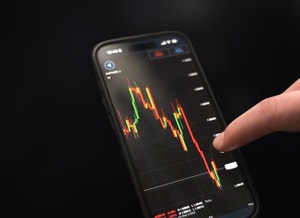NZD/USD, AUD/USD price analysis: losses extend as economic growth slows
Discover why the NZD/USD and AUD/USD pairs are facing extended losses amid slowing economic growth. Learn how recent rate decisions and GDP data are impacting these currencies in the forex market.

Key points
- NZD/USD is trading under 0.6000, nearing historic lows
- AUD/USD has reversed sharply, down over 3% in the past two weeks
- GDP growth in Australia has stalled, and negative in New Zealand
- Interest rate cuts in China have not stimulated economic activity as hoped
New Zealand dollar crashes below 0.6000
The NZD/USD pair has plummeted to a new low, trading down to 0.5900 amid weakening signals from the New Zealand economy. The 15-year low for the pair hovers around 0.5600, underscoring the significance of this recent drop.
Australian dollar breaks 0.6600, again
Recently, AUD/USD dipped below the 0.6600 threshold after having approached year-to-date highs near 0.6800. This reversal highlights vulnerabilities in the Australian dollar, reflecting broader market hesitations and perhaps a bearish outlook for the near term.
Negative GDP growth rates in New Zealand
With New Zealand posting negative GDP growth in two of the last three quarters, anticipation is building around potential action from the Reserve Bank of New Zealand. Markets are increasingly pricing in a likely scenario of rate cuts as a measure to stimulate the faltering economy.
Australian GDP growth rates near 0%
Similar to its neighboring nation, Australia's GDP growth has been persistently weak, not surpassing 0.5% since Q1 of 2023. This stagnation is nearing levels that typically delineate recession phases, raising concerns about the country's near-term economic trajectory.
Weak Chinese data sets fearful tone in Asia, Australia
Following another interest rate cut by China in July aimed at economic stimulation, investor reaction has been predominantly negative. This mood has led traders to shift away from risk-on currencies like the AUD and NZD, flocking instead to safe-haven assets amidst regional economic uncertainties.
How to trade Australasian currencies
- Open an account to get started, or practice on a demo account
- Choose your forex trading platform
- Open, monitor, and close positions on NZD and AUD pairs
Trading forex requires an account with a forex provider like tastyfx. Many traders also watch major forex pairs like EUR/USD and USD/JPY for potential opportunities based on economic events such as inflation releases or interest rate decisions. Economic events can produce more volatility for forex pairs, which can mean greater potential profits and losses as risks can increase at these times.
You can help develop your forex trading strategies using resources like tastyfx’s YouTube channel. Our curated playlists can help you stay up to date on current markets and understanding key terms. Once your strategy is developed, you can follow the above steps to opening an account and getting started trading forex.
Your profit or loss is calculated according to your full position size. Leverage will magnify both your profits and losses. It’s important to manage your risks carefully as losses can exceed your deposit. Ensure you understand the risks and benefits associated with trading leveraged products before you start trading with them. Trade using money you’re comfortable losing.






